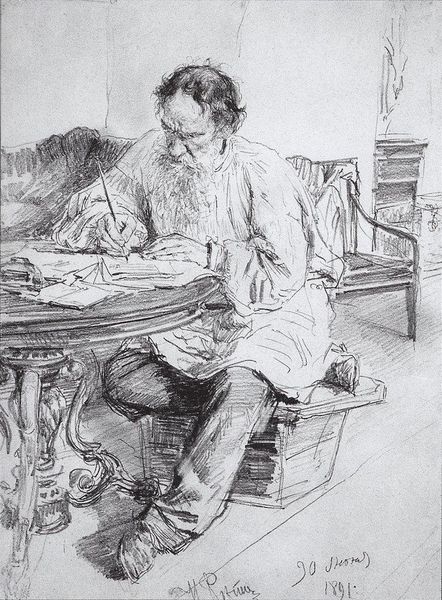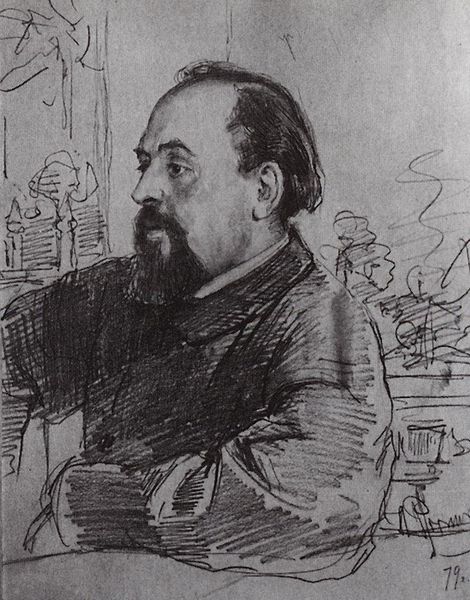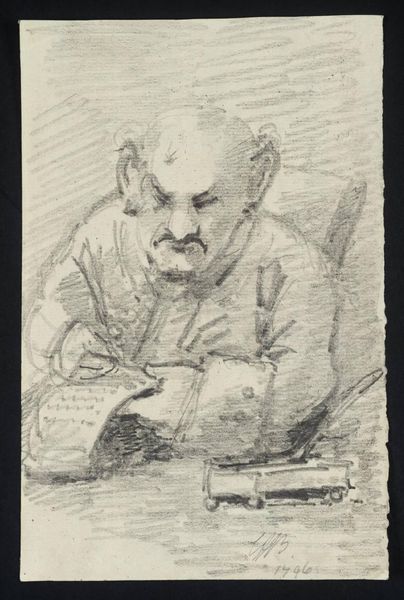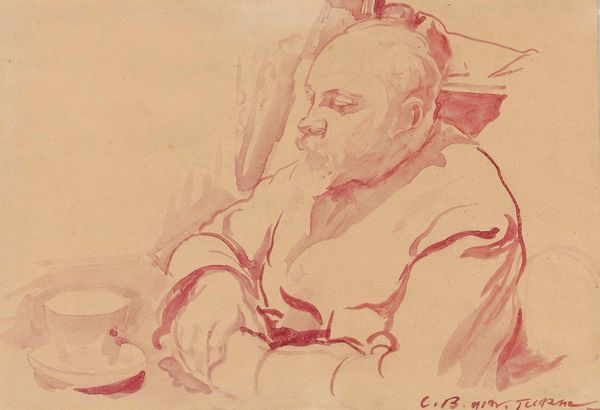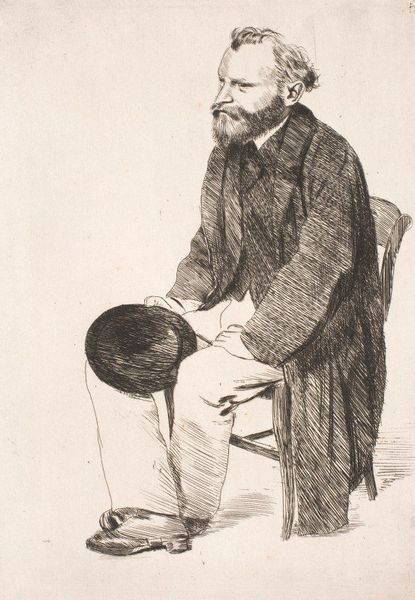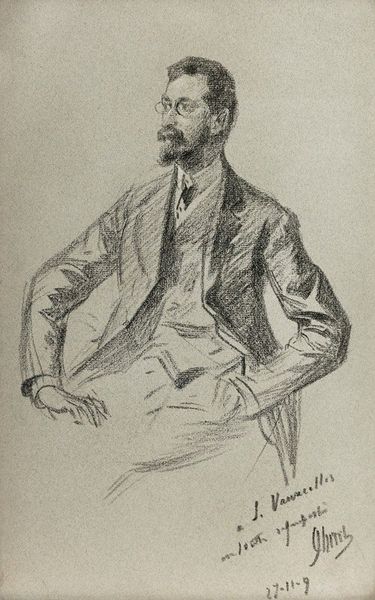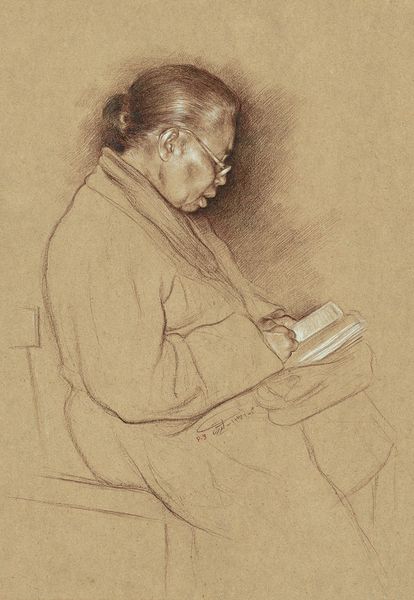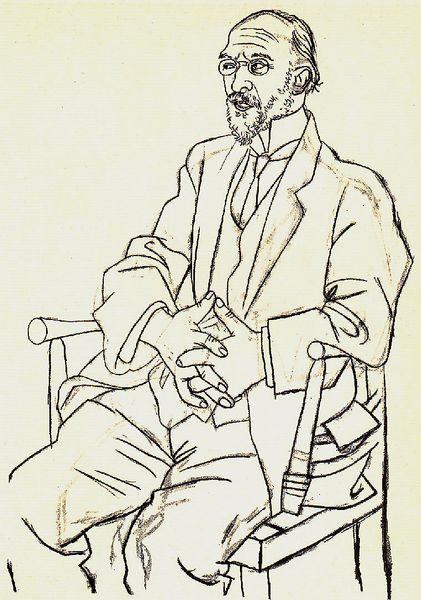
drawing, pencil, graphite, charcoal
#
portrait
#
drawing
#
pencil sketch
#
charcoal drawing
#
pencil drawing
#
pencil
#
graphite
#
russian-avant-garde
#
portrait drawing
#
charcoal
Copyright: Public domain
Editor: So, here we have Boris Kustodiev's "Portrait of I.A. Ryazanovsky," a pencil and charcoal drawing from 1914. It feels so immediate and personal. The lines are quick and a little unfinished. What catches your eye when you look at this? Curator: I immediately focus on the materiality. Kustodiev’s choice of humble materials like pencil and charcoal speaks volumes. This isn't about grand oil painting or bronze sculpture. It’s about the direct relationship between artist, subject, and readily available tools. What does it tell us about the economics of art production and consumption in pre-revolutionary Russia? Was Kustodiev making a statement about artistic accessibility, or was this simply a pragmatic choice given the circumstances? Editor: That’s a perspective I hadn’t considered. I was more focused on the intimacy of the portrait itself. The subject is shown reading. Curator: Precisely! Consider the means of disseminating knowledge at the time: books, journals, perhaps even socialist pamphlets. By depicting Ryazanovsky with printed matter, Kustodiev implicates him within a broader network of intellectual and potentially subversive activity. Are we to consider that the mass production of such literature also mirrors his choice of cheaper materials for creation of the drawing? Editor: It's fascinating how you connect the artistic materials to the wider social context. Curator: Every mark on the paper represents a decision, a material engagement with the world. Understanding those decisions gives us insight into the artist’s intent, as well as the socio-economic conditions that shaped that intent. Editor: I will look differently at drawings from now on. Thanks. Curator: The power of material culture, indeed. A closer look at process, material and social implications enriches not only appreciation but our comprehension.
Comments
No comments
Be the first to comment and join the conversation on the ultimate creative platform.
